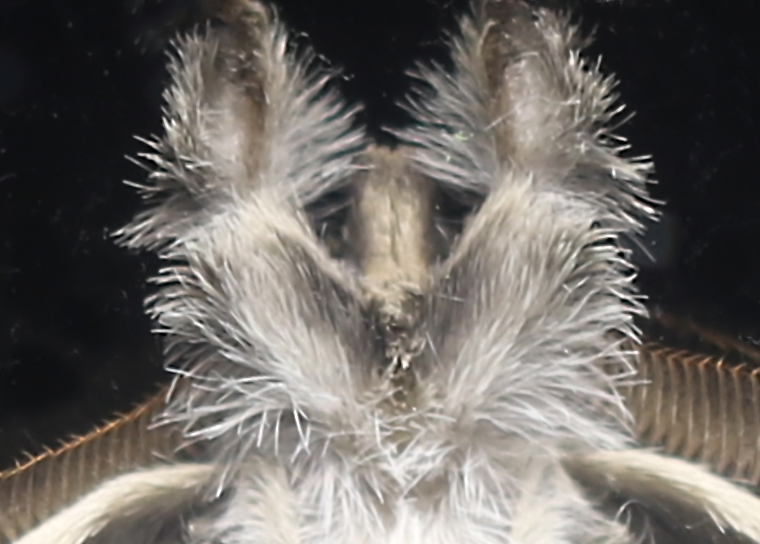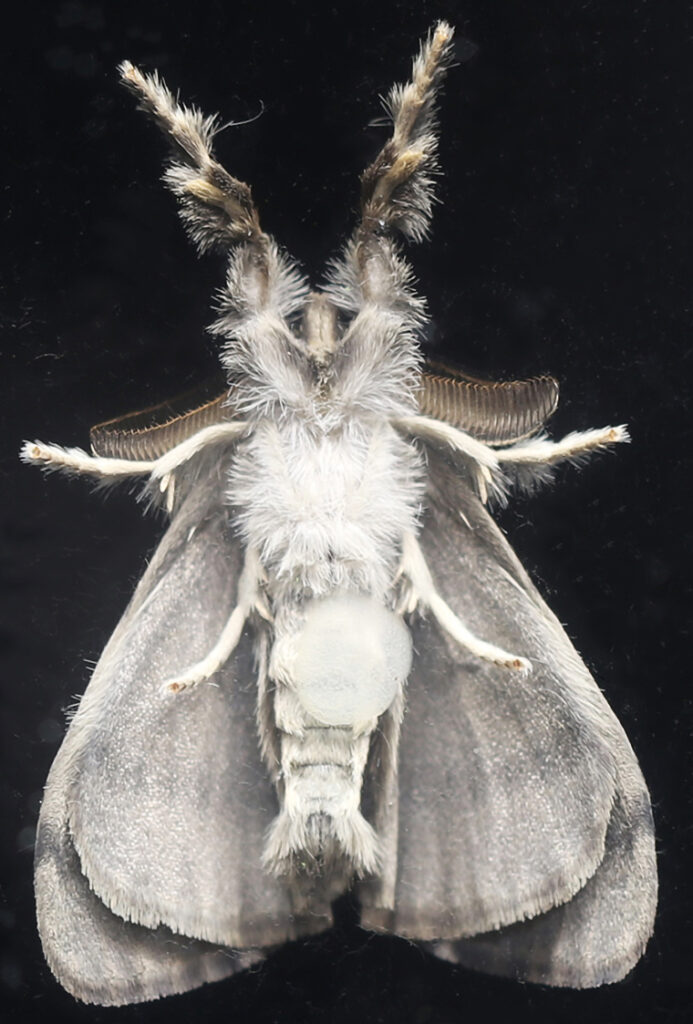
What would you think if you saw this thing looking in your window at night? Is it some monster from outer space? A hairy demon of some sort?
A lot of you will recognize what sort of creature this is, but I am going to insert an arrow here so that others can not yet see the actual answer. Try to figure it out before you scroll down.


It is of course the underside of a moth. The length of this one is only about 1.5 inches, so not as formidable as it appears when viewed in closeup. This is a male, because one can see the feathery antennae (called in this case, “bipectinate” meaning “having comblike filaments extending to each side of a central shaft”) on each side of the head just above the middle pair of legs. The first pair of legs characteristically extend forward from the head, and they have the appearance of a pair of ears.
I was having some trouble identifying this moth. I only have photographs of the underside of the moth. It alighted on a window in our house that is so high that I was unable to go outside and get a photograph of the back (dorsal) side. All of my moth guidebooks use the patterns on the dorsal side of moths for identification. However, Dr. James Adams, of Dalton State College, came to my rescue. He identified it as a species of Orgyia. a type of Tussock Moth. According to Dr. Adams, we have three species of Orgyia in our area, and they can only be distinguished by a dorsal view.
Tussock Moths are interesting creatures. Males fly in daytime, and they fly very erratically, probably to evade predators such as birds. In Britain, Tussock Moths are often called “Vapourer Moths”, and they are said to exhibit “vapouring” flight, which I think refers to the erratic flight exhibited by males.
Our species of Tussock Moths do not eat as adults, and the females are flightless. Females typically perch on the cocoon from which they have emerged, emit a volatile compound which attracts males, lay eggs on the cocoon, and then die. When the eggs hatch, they emit a silk thread to lower themselves to the ground. Sometimes the thread becomes detached and the caterpillars are wafted away by the wind. The caterpillars are very handsome, They have clumps of hair on their back which resemble clumps of grass or “tussocks”, thus the name.
I have never been able to photograph a female Tussock Moth or a cocoon. If you are interested, there is an excellent article from the University of Florida with many nice photographs of the entire life cycle here.

Thanks Gary, your posts are always so interesting.